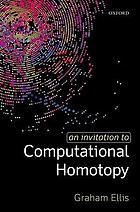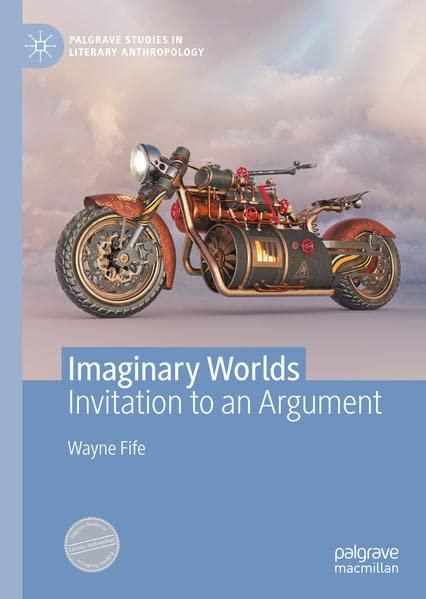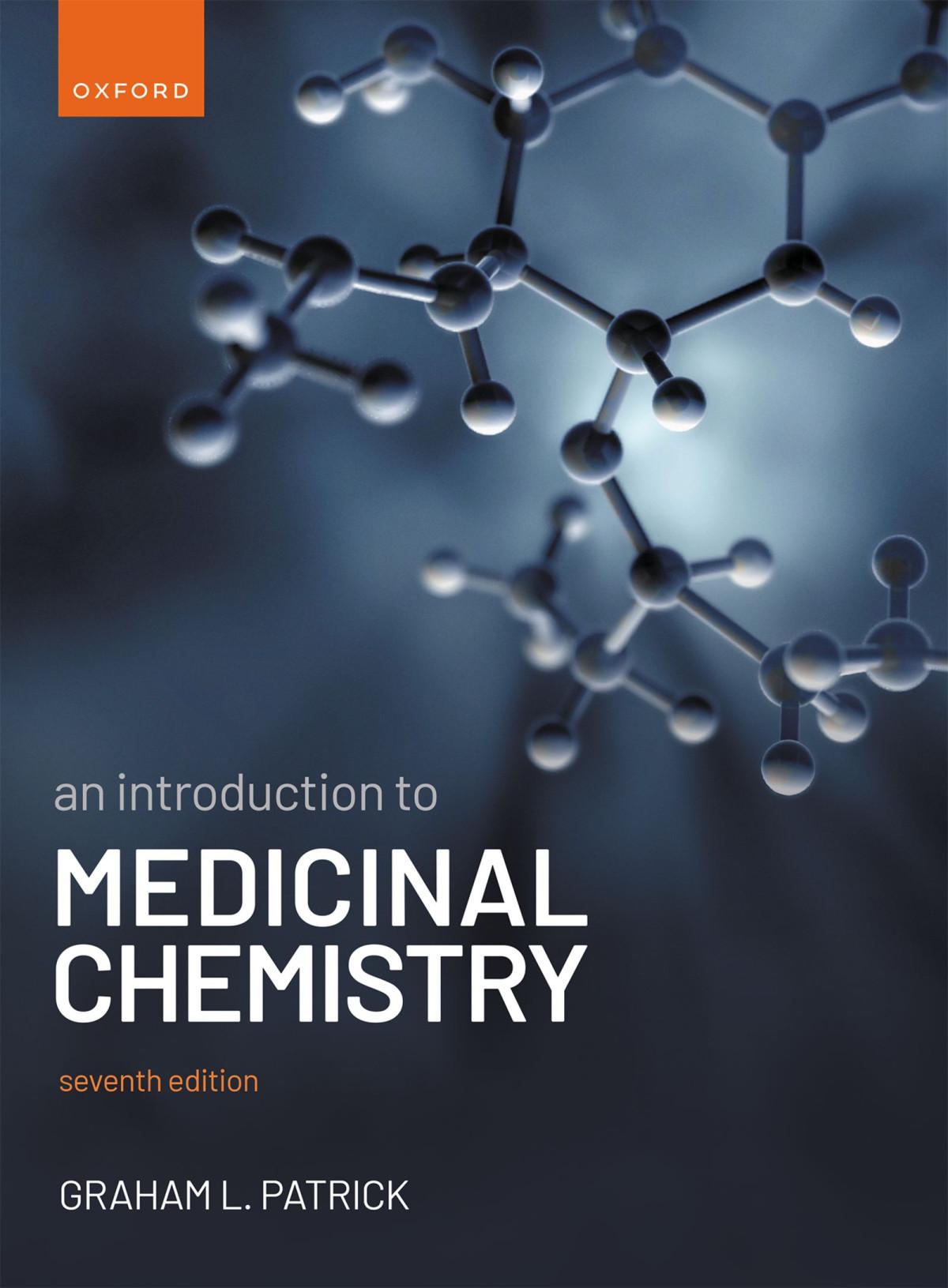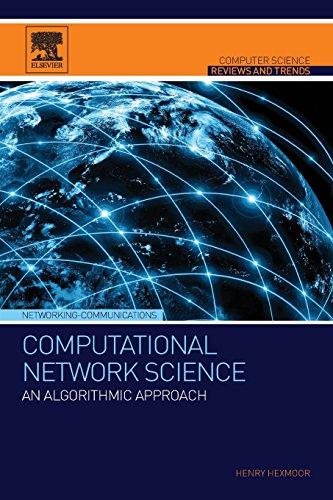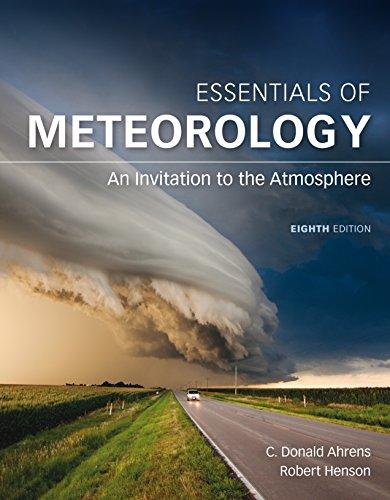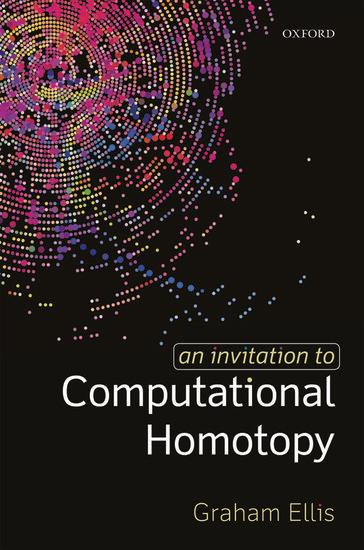AnInvitationto ComputationalHomotopy
grahamellis
GreatClarendonStreet,Oxford,OX26DP, UnitedKingdom
OxfordUniversityPressisadepartmentoftheUniversityofOxford. ItfurtherstheUniversity’sobjectiveofexcellenceinresearch,scholarship, andeducationbypublishingworldwide.Oxfordisaregisteredtrademarkof OxfordUniversityPressintheUKandincertainothercountries
©GrahamEllis2019
Themoralrightsoftheauthorhavebeenasserted
FirstEditionpublishedin2019
Impression:1
Allrightsreserved.Nopartofthispublicationmaybereproduced,storedin aretrievalsystem,ortransmitted,inanyformorbyanymeans,withoutthe priorpermissioninwritingofOxfordUniversityPress,orasexpresslypermitted bylaw,bylicenceorundertermsagreedwiththeappropriatereprographics rightsorganization.Enquiriesconcerningreproductionoutsidethescopeofthe aboveshouldbesenttotheRightsDepartment,OxfordUniversityPress,atthe addressabove
Youmustnotcirculatethisworkinanyotherform andyoumustimposethissameconditiononanyacquirer
PublishedintheUnitedStatesofAmericabyOxfordUniversityPress 198MadisonAvenue,NewYork,NY10016,UnitedStatesofAmerica
BritishLibraryCataloguinginPublicationData
Dataavailable
LibraryofCongressControlNumber:2019937515
ISBN978–0–19–883297–3(hbk.)
ISBN978–0–19–883298–0(pbk.)
DOI:10.1093/oso/9780198832973.001.0001
Printedandboundby CPIGroup(UK)Ltd,Croydon,CR04YY
LinkstothirdpartywebsitesareprovidedbyOxfordingoodfaithand forinformationonly.Oxforddisclaimsanyresponsibilityforthematerials containedinanythirdpartywebsitereferencedinthiswork.
ToMaren,Eileen,AledandJan
Preface
Thisbookhasbeenwrittenasanintroductiontoelementaryalgebraictopologyfor studentswithaninterestincomputersandcomputerprogramming.Itsaimisto illustratehowthebasicsofthesubjectcanbeimplementedonacomputer.Thetransition frombasictheorytopracticalcomputationraisesarangeofnon-trivialalgorithmicissues anditishopedthatthetreatmentofthesewillalsoappealtoreadersalreadyfamiliar withbasictheorywhoareinterestedindevelopingcomputationalaspects.Thebook coversasubsetofstandardintroductorymaterialonfundamentalgroups,coveringspaces, homology,cohomologyandclassifyingspacesaswellassomelessstandardmaterialon crossedmodules,homotopy2-typesandexplicitresolutionsforaneclecticselectionof discretegroups.Itattemptstocoverthesetopicsinawaythathintsatpotentialapplicationsoftopologyinareasofcomputerscienceandengineeringoutsidetheusualterritory ofpuremathematics,andalsoinawaythatdemonstrateshowcomputerscanbeused toperformexplicitcalculationswithinthedomainofpurealgebraictopologyitself.The initialchaptersincludeexamplesfromdatamining,biologyanddigitalimageanalysis, whilethelaterchapterscoverarangeofcomputationalexamplesonthecohomologyof classifyingspacesthatarelikelybeyondthereachofapurelypaper-and-penapproachto thesubject.Theappliedexamplesintheinitialchaptersuseonlylow-dimensionaland mainlyabeliantopologicaltools.Ourapplicationsofhigherdimensionalandlessabelian computationalmethodsarecurrentlyconfinedtopuremathematicalcalculations.The approachtakentocomputationalhomotopyisverymuchbasedonJ.H.C.Whitehead’s theoryofcombinatorialhomotopy[289–291]inwhichheintroducedthefundamental notionsofCW-space,simplehomotopyequivalenceandcrossedmodule.Thebook shouldserveasaself-containedinformalintroductiontothesetopicsandtheircomputer implementation.Itiswritteninastylethattriestoleadasquicklyaspossibletoarange ofpotentiallyusefulmachinecomputations.Itdoesnotaimtoprovideanencyclopaedic treatmentofanytopicsincomputationaltopology.Nordoesitaspiretoreflecttherange ofdeeptheoreticalprinciplesthatunderlyandcontributesomuchtoalgebraictopology. Rather,itadherestotheverymodestgoalofdescribinghowoneauthor,andhiscoworkersandstudents,havestrivedtomaketopologicalcomputations.Itishopedthat thedescriptionwillaidotherswishingtoparticipateinthegrowingfieldofappliedand computationalalgebraictopology.
Thebookisintendedtobeaccessibletograduatestudentswhohavetakenstandard undergraduatemodulesinalgebra(linearalgebra,groups,ringsandfields)andpoint-set
topology.Itcanbeusedinvariousways.Chapters1and2canformthebasisofaonesemesterintroductiontothefundamentalgroup,homologyandcohomologyofsimplicial,cubicalandCW-spaces.Thisintroductioncouldcovercomputationalexamples onfundamentalgroupsof3-dimensionalspacesarisingasthecomplementofknotted proteins,alongwithcomputationalinvestigationsofpointclouddatausingpersistent homologyandcohomologycupproducts.Alternatively,Chapter3togetherwithaselectionofmaterialfromChapters4–6canformthebasisofaone-semestermoduleongroup cohomologyforstudentsalreadyfamiliarwithbasicalgebraictopology.Suchamodule couldincludeexplicitcomputationsofmod-p cohomologyringsforsmallfinite p-groups andcomputationalinvestigationsof:(i)Stiefel–Whitneyclassesofrealrepresentations ofsmallfinite p-groups,(ii)thelow-dimensionalintegralhomologyoffinitegroupssuch astheMathieusimplegroups,and(iii)integralcohomologyofsomeArtingroupsand arithmeticgroups.Whenusedastheprimarybasisforataughtmodule,thebookcouldbe supplementedbyanyofthemoretraditionalintroductionstoalgebraictopologyorgroup cohomologyasameansofreinforcingtheoreticalaspectsofthesubject.Alternatively,the bookandassociatedsoftwarecouldsimplybeusedasacomputationalsupplementinan existingtaughtmoduleinordertoprovidestudentswitheasyaccesstoabroadrangeof machineexamples.
Thebookdoesnothaveitsoriginsinanyparticulargraduatecourse.Rather,ithas itsoriginsinsomecomputerroutinesforelementarycohomologycalculationswritten overadecadeagobytheauthor.Theseroutineswerewrittenforthe GAP systemfor computationalalgebra[126]andhaveevolved,withthehelpofgraduateandpostdoctoral students,intothe HAP packagefor HomologicalAlgebraProgramming [100]whichis nowdistributedwith GAP.Whenastudentbeginsaprojectincomputationalalgebraic topology,theprecisedatatypesfortheinputandoutputofanalgorithmneedtobe carefullyspecified,asdothemathematicaltechniquesunderlyingthealgorithms.These datatypesandtechniquesneedtoberecordedinaneasilyreadabledocumentifnew studentsaretofurtherdevelopimplementationsofformerstudents.Thatdocumentation hasevolvedintothecurrentbook.Itisthushopedthatthebookwillbeofusetoindependentresearchersinterestedinusingordevelopingthe GAP computationalalgebrasystem forperformingaparticularcohomologicalcalculationaspartoftheirinvestigations.
Therearemanygoodintroductionstoelementaryalgebraictopology.Personal favouritesareWilliamMassey’sintroductorytext[203]andthemorerecentand slightlymorecomprehensivebookbyAllenHatcher[150],bothwrittenbysignificant contributorstothesubject.Athirdpersonalfavourite,withamorespecializedfocus forreadersalreadyfamiliarwiththebasics,isKennethBrown’sintroductorytexton thecohomologyofgroups[39].Buttherearemanyotherexcellentintroductorytexts thatcouldbeequallywellrecommendedtobeginninggraduatestudents.Thisposesan obviousdifficultyforanyauthorofanewintroductiontoaspectsofthesubject.The currentbookaimstotacklethedifficultybyminimizingtheintersectionwithothertexts asfaraspossible,subjecttotheconstraintofremainingreasonablyself-contained.Itaims tosupplementtheliteraturebydescribinghowtechniquesfromcomputationalalgebra canbeusedtoinvestigateexamplesthatgobeyondareader’stolerancefortediouslylong paper-and-pencalculation.Thebookisthuswrittenundertheassumptionthatthereader
hasaccesstosomeoftheexistingintroductoryliteratureandthewillingnesstoconsult thesetextsoccasionallyshouldcuriosityarise.
Anyintroductiontoalgebraictopologyhastomakechoicesastowhichstandard topicstoexclude.Inthepresentbookthechoiceswereguidedbytwoprinciples:(i) onlymaterialcloselyrelatedtoalgorithmsalreadyimplementedinthe HAP package isincluded;(ii)forefficientimplementationsofalgorithmssomenotionsaregivena moredetailedtreatmentattheexpenseofreducedtreatmentsofotherbasicnotions. Forexample,thefirstprinciplehasledtotheomissionofapropertreatmentofsingular homology.Thisprinciplehasalsoledtotheomissionofthecomputationallyuseful notionof -complexes.Asanexampleofthesecondprinciplewementionthatthebook startswithanaccountofCW-spacesandthentreatssimplicialcomplexesinpassingasa particularcase.
Thechaptersofthebookfallundertwothemes:
1basictopologyCW-spaces,pathcomponents,topologicalpersistence, simplehomotopy,fundamentalgroup,coveringspaces
2 cellularchaincomplexes,homologyoverfieldsand principalidealdomains,homologicalpersistence, cohomologyandcupproducts
3homotopicalalgebracohomologyof groups,homologicalperturbation
4 relationbetweengrouptheoryandcohomologyofgroups
5 cohomologyofcrossedmodules,simplicialgroups, homologicalperturbation
6 freeresolutionsforarangeofgroups
Thefirsttwochaptersofferashortintroductiontothefundamentalgroupandcellular (co)homology,andaremotivatedbycomputerapplicationstodynamicalsystems,data mining,digitalimageanalysis,proteinanalysisandgrouptheory.Thechoiceofmaterialin theseinitialchaptershasbeeninfluencedbyrecenttextbookson ComputationalHomology [173]and ComputationalTopology [92]andthesurveyarticle[53]on TopologyandData. Chapters3and6covermaterialonthecohomologyofgroups,theformercoveringmore standardmaterialwhilethelatterismoreeclectic.Theyincludetechniquesforcomputing classifyingspacesandcohomologyofarangeofclassesofdiscretegroupssuchasfinite groups,finitelygeneratednilpotentgroups,Euclideancrystallographicgroups,Coxeter groups,graphsofgroups,varioushyperbolicgroupsandarithmeticgroups,andcertain Artingroups.Techniquesforcomputingthefullmodularcohomologyringstructure aregiveninthecaseoffiniteprime-powergroups.Animplementationofthemod-2 Steenrodalgebraisdescribedforfinite2-groups.Animplementationofclassifyingspaces forproperactionsandBredonhomologyisdescribedforvariousinfinitegroups.The
materialinChapters3and6hasbeenstronglyinfluencedbyBrown’stexton Cohomology ofGroups [39].Chapter3delegatesproofsaboutSteenrodoperationstothebookby MosherandTangora[218].Chapter6isalsoinfluencedbythebooksbyDavis[76] andBridsonandHaefliger[36]ongeometricgrouptheory.Somegrouptheoreticapplicationsoflow-dimensionalcohomologyandnonabeliantensorproductsarecoveredin Chapter4.InChapter5weturntosimplicialgroups,theircohomologyandinparticular thecohomologyofhomotopy2-typesasrepresentedbycrossedmodules.Thatchapter delegatesvariousproofstothebookbyGoerssandJardineon Simplicialhomotopy theory [132].Thematerialrelatedtocrossedmodulesinthatchapterandelsewhereis stronglyinfluencedbythebookofBrown,HigginsandSiveraon Nonabelianalgebraic topology [43].Backgroundmaterialonpoint-settopology,categoriesandfunctors,and finitelypresentedgroupsandgroupoidsispresentedinanappendix.Theappendixalso contains:ashortsurveyofothersoftwareforhomologyandforgroupcohomology; installationinstructionsfor HAP;andadiscussionofparallelcomputationinwhichbasic functionalityforparallelcomputationwithin HAP isdescribed.Asecondappendix, containingadescriptionofall HAP functionsusedinthebook,isavailableonline[101].
Theprimaryfocusofthebookiscomputationandmuchofthematerialconcerns algorithms(oratleastprocedures),theirimplementationandsampleapplicationsof theimplementation.Implementationstendtobeephemeralduetochangingsoftware platforms,whereasalgorithmsandproceduresareaseternalasmathematics.Probably forthisreasonmanybooksoncomputationpresentprecisepseudo-codedescriptions ofalgorithms,togetherwithresultsordiscussionontheircomplexity,anddownplay implementations.The HAP softwarepackageisanexperimentinhowfaronecanpush theprojectofencodingalgebraictopologyintotouch-of-a-buttonfunctionssuitablefor non-specialistswhosimplyneedtoknowtheanswertoaparticularcalculationanddo notcaresomuchaboutthemethodofcomputation.Forinstance,atheoreticalphysicistinterestedinconfirmingthattheMathieugroup M24 hasthirdintegralhomology H3 (BM24 , Z) = Z12 mightbesatisfiedwiththeoutputofthefunction gap>GroupHomology(MathieuGroup(24),3); gap>[4,3]
withoutneedingdetailsofhowthisfunctionisimplemented(cf.[79,121,124]).Such functionssometimesmakecallstoproceduresforwhichtheeasiestproofthattheprocedureterminatesonthegiveninputistoruntheprocedureandobservethatitterminates! Giventheaimsof HAP andthedifficultyofdecidingifsomeprocedureswillever terminate,thepresentbookdownplaysprecisepseudo-codeandomitsdiscussionofcomplexity.Instead,itusesrelativelyinformalstandardmathematicallanguagetodescribe mostalgorithmsandprocedures,andgivesdetailedexampleapplicationsofthecurrent HAP implementations.The HAP implementations,whicharemostlywritteninthevery readable GAP programminglanguage,areavailableforviewingintheopensource GAP distribution.Manyoftheimplementationsneedtomakesomefairlyrandomchoices duringtheirexecutionandthesechoicescansignificantlyaffecttheruntime.Forthat reasonthebookomitssampleruntimes.Ifthereaderisinterestedinhowthecurrent implementationmightperformonagiveninputthenheorshesimplyhastotryitouton acomputer!
Thealgebraictopologyimplementedin HAP predatestheinventionofthepersonal computer.However,itwasdesignedinamodularfashionandthismodularityhasbeen transporteddirectlyintotheimplementationaccordingtothefollowingprinciple.
Adatatypeshouldonlybeincludedintheimplementationifthereisacorresponding standardnotionintopology.Afunctionshouldonlybeincludedintheimplementationif thereisacorrespondingstandardconstructionintopology.
Forexample,intopologywehavethenotionsof:simplicialspace,CW-space,chain complexandhomology.Wehavefunctorsthat:regardasimplicialspace X asaCWspace,assignanintegralchaincomplex C∗ X toaCW-space,assigna Zp -chaincomplex C∗ ⊗Z Zp toanintegralchaincomplex C∗ ,andassignavectorspace Hn (C∗ ⊗Z Zp ) to a Zp -chaincomplex.Tocomputethehomologygroup H2 (S2 , Z3 ) = Z3 in HAP one couldusethefollowingcommandswhichreflectthisfunctoriality.
gap>S2:=SimplicialComplex([[1,2,3],[1,2,4],[1,3,4],[2,3,4]]); Simplicialcomplexofdimension2. gap>Y:=RegularCWComplex(S2); RegularCW-complexofdimension2 gap>C:=ChainComplex(Y); Chaincomplexoflength2incharacteristic0. gap>D:=TensorWithIntegersModP(C,3); Chaincomplexoflength2incharacteristic3. gap>HomologyVectorSpace(D,2); (GF(3)ˆ1)
Thisdesignprincipleisonethatcancarryovertootherpotentialsoftwareimplementationsandisquiteindependentoftheparticular HAP implementationusedthroughout thebook.Thereadercanview HAP simplyasanillustrationoftheprinciple.Thereare twoobviousbenefitstothedesignprinciple.Firstly,thebasicdefinitionsandconstructionsofalgebraictopologyareknowntopiecetogetherseamlesslyintoonepowerfuland extensibletheory.Softwarethatadoptsthesametestedcomponentdesignisassuredto beequallyextensible.Secondly,topologistswilllikelybetemptedbysuchsoftwaremore thanbyanadhoccollectionofcomputerroutines.Insupportofthelatterassertionwe mentionthat,forinstance:afour-line HAP programisusedintherecentpaper[70]to helpanswera45-year-oldquestionofR.H.Bingconcerningthefixedpointpropertyof spaces;alonger HAP programisusedintherecentmemoir[163]tohelpwiththestably rationalclassificationofalgebraictoriofdimensions4and5overafield k. Thereadermaywonderwhythe GAP programminglanguagehasbeenchosento illustratethecomputerimplementationofalgebraictopologyasopposedtosomemore widelyusedlanguagesuchasC++.Thereareessentiallytworeasonsforthischoice. Firstly, GAP containsmanyefficientimplementationsofbasicalgorithmsthatare neededintopology(echelonform,Smithnormalform,nilpotentquotientalgorithm, Reidemeister–Schreiersubgrouppresentation,Todd–Coxeteralgorithmanddouble
cosetenumeration,orbit-stabilizeralgorithm,Sylowsubgroupsandotherbasicgrouptheoreticconstructions, )andprovideseasyaccesstobasiclibrariesusedtoillustrate thealgorithms(smallgroupslibrary,crystallographicgroupslibrary,finitesimplegroups library,irreduciblegrouprepresentations, ... )anditwouldbefutiletoreimplementall ofthis.Secondly,amaingoalofthe HAP projectistodecideon,andclearlydocument, theprincipaldatatypesandfunctionsthatshouldbeimplementedinatopologysoftware system,andtodemonstratethatthechoicesyieldapracticalsystem.Thisgoalislargely independentofprogramminglanguage,buttherearefeaturesof GAP thatfacilitate theproject:itisopen-sourcesoftware;ithasaconvenientinteractiveenvironment;it allowsforlow-levelalgorithmstobeimplementedinC;itisactivelysupportedbythe internationalcomputationalalgebracommunity;ithasestablishedlinkswith Polymake and Singular software.
Eachcomputationalexampleinthebookisavailableinthe HAP packageasa GAP readablefile.CoderelatingtoExamplex.y.zcanberunusingthecommand
HapExample(“ x.y.z ”); sothattheexamplecanthenbefurtherinvestigatedusingthefullfunctionalityof GAP. Theexamplestakeanythingfromafractionofasecondto,insomecases,severalhoursto runonatypicallaptopcomputer.Someexamplesrefertodatafilesandincludeareference [filename];therelevantdatafileisavailableinthe HAP package.Themajorityofthe GAP examplesrunonthedefaultWindowsandLinuxversionsof GAP.Someofthe examplesrequire GAP packagesthatrunonlyonLinux.Afewexamplesrequireexternal opensourcesoftwaresucha Singular or Polymake whichagainonlyrununderLinux. Thebooktreatsexternalsoftwareasblackboxeswhichsimplydowhatissaidonthebox.
VariousPhDstudentsandpostdocsatGalwayhavehelped,eitherdirectlyorindirectly, withthematerialinthisbookandthanksareduetoallofthem.Inchronologicalorder,the PhDstudentsare:AidanMcDermott,IrinaKholodna,JamesHarris,SeamusKelly,Maura Clancy,FintanHegarty,LeVanLuyen,BuiAnhTuan,DaherFrehAl-Baydli,NisreenAlOkbi,KevinKilleen.Againinchronologicalorder,thepostdocsare:EmilSköldberg, GeraldWilliams,MarcRöder,PaulSmith,SimonKing,MarkDickinson,Alexander Rahm.ThematerialinthebookhasalsobenefitedgreatlyfromextendedvisitstoGalway byPabloFernándezAscariz,CédricFragnaud,HamidMohammadzadeh,RobertMorse, AnaRomeroandMathieuDutourSikiri´c.
GrahamEllis NationalUniversityofIreland,Galway December2018
ListofFigures
1.1TorusendowedwithaCW-structure.
1.3IllustrationofTheorem1.1.1.
1.4Orbitpolytopeforthesymmetricgroup S4 .12
1.5Thepolytope C(G, v).14
1.6Thepolytopes 3 and I3 .15
1.7Polytopeboundaryisa2-dimensionalCW-subspaceof 12 .15
1.8SimplicialKleinbottle.
1.93-dimensionalprism.
1.10Purecubicalandpermutahedralmodelsofthetrefoilknot.
BL forthepermutahedrallattice.
1.12Nervesoftwospaces.
1.13 L-balland L-spherefor r = 2.
1.14StrangeattractoroftheHénonmap.
1.15Valuesof N (A, ) fortheHénonattractor.
1.16A2-dimensionalCW-space.
1.17ApplicationofAlgorithm1.3.1totheKleinbottle.
1.21Athresholdplot.
1.22BarcodeforpersistentBettinumbers.
1.23Barcodefordendrogram.
1.24Barcodeforfiltration.
1.25Barcodeforfiltration.
1.26Purecubicalcomplexesobtainedfromanimageofastarfish.
1.270-dimensionalbarcodeforastarfish.
1.28Purecubicalcomplexesforastarfish.
1.290-dimensionalbarcodeforastarfish.
1.30Pointcloudin R2 .44
1.31SimplicialgraphproducedbytheMapperalgorithm.
1.32DatapointsandcorrespondingMappergraph.
1.33Anelementaryexpansionof Y .47
1.34SimplificationofaregularCW-space.
1.35Bing’shouse.
1.36ProofofProposition1.4.4.
1.37Duncehat.
1.38ContactspaceofaCW-space. 55
1.39BackboneoftheThermusThermophilusprotein.
1.40Admissiblediscretevectorfieldonthetorus. 59
1.41Thespaces T 0 , V 1 and T 1 .60
1.42TheQuillencomplex A2 (S4 ).63
1.43Equivalentpathsin Y I .67
1.44SubcomplexofthesimplicialKleinbottle. 73
1.45Knotdiagramforthetrefoilknot. 74
1.46Additionofatrefoilknotanditsmirrorimage. 75
1.47Aknotconstructedfromasequenceof163points. 79
1.48AnexampleoftheErdõs–Rényigraph G(1000,1/750).80
1.49Plotsof β0 (G(5000, p)) and d(π1 Y (60, p)).80
1.50SketchproofofSeifertandvanKampen’stheorem.
1.51Contractiblepurecubicalspace.
1.52Atorusastheunionoftwooverlappingcylinders.
1.53Fundamentalgroupgeneratorsforthetrefoilcomplement.
1.54Thetwotypesofknotcrossing.
1.55Planarknotdiagramforthetrefoil.
1.56A4-crossingknotdiagram.
1.57Knotnumber1on9crossings.
1.58Classifyingindexforprimeknots.
1.59Twotrefoilknots.
1.60Borromeanringsandthreeunlinkedtrivialknots.
1.61HomoSapiens1xd3proteinbackbone.
1.62Secondprimeknotonfivecrossingsandarelatedgraph.
1.63ADirichlet-Voronoiregion.
1.64A2-dimensionalcubicallatticemanifold.
1.65Cayleygraphforthegroup H3
1.66Chickenredbloodcells.
1.67A2-foldcoverof S1 ∨ S1 .
2.1Imagesofacollectionofletters.
2.2Barycentricsubdivisionofacube.
2.3Relatordisks.
2.4Stargraphofapresentation.
2.5Surfacefora2-dimensionalArtingroup.
2.6Relatorsdisksandasyzygy.
2.7Spanningtreeonasphere.
2.8Plotsof βk (K (100, p))
2.9Plotsof βk (L(50, p))
2.10Adatacloudanditsthickenings.
2.11 β ∗,∗ 1 barcodefor C∗ (Y∗ , Q)
2.12 β ∗,∗ 1 barcodefor C∗ (K∗ , Q)
2.13Acloudof3527points.
2.14 β ∗,∗ 1 and β ∗,∗ 2 barcodes.
2.15Cubicalcomplexforthe1v2xprotein.
2.16 β ∗,∗ 1 barcodeofthe1v2xprotein.
2.17Datacloudand1-skeletonofanassociatedspace.
2.18 β0 barcode(top)and β1 barcode.
2.19 β1 barcode.
2.20Graphfittedtoadistancematrix.
2.21Imagesoftheletters“A”and“B”.
2.22GraphfittedtotheimagesofFigure2.21.
2.23Afew3 × 3grey-scalepatches.
2.24 β0 barcode(left)and β1 barcode.
2.25TwoDirichlet–Voronoifundamentaldomains.
2.26Piecewiselinearknot.
2.27Spaces U ⊂ A ⊂ X .
2.28Crosssectionofapurecubicalcomplex.
2.29AvanKampendiagram.
2.30AvanKampendiagram.
2.31Linkwiththreecomponents.
2.321-skeletonofaterminafilteredsimplicialcomplex.
3.1Edgegraphofafundamentaldomain.
3.2Discretevectorfieldon R.
3.3Thecubictree.
3.4Orbitpolytope.
3.5Degree2persistentradicalnumbers.
3.6vanKampendiagramsforLemma3.6.1.
3.7Degree5homologybarcodes.
3.8ThefiniteirreducibleCoxeterdiagrams.
3.9Coxeterpolytopefor H3
3.10PortionofaninfiniteCoxeterCayleygraph.
3.11PortionofaninfiniteCoxeterCayleygraph.
4.1Geometricinterpretationofequation4.4.
5.1Schematicdepictionofarelativemap.
5.2Piecewiselinearmapfromunitsquare.
5.3Alollipopin W .
5.4 S1 × S1 × S1 asaquotientofacube.
6.1vanKampendiagramforasyzygy.
6.2Stargraphsforrelators.
6.3Graphsofgroups.
6.4Cubictree.
6.5Tessellationsfor
6.6FreeresolutionforEuclideanandhyperboliccases.
6.7Orbitpolytopefor A4
6.8Hyperbolicquadrilateral.
6.9Tetrahedronin H3 withfouridealvertices.
6.10Dual2-complexforthetetrahedronin H3 .
6.11Coxetergraphfor A4 .
6.12Weakorderon A3 .
6.13Hassediagramfortheweakorderon W = S
6.14Discretevectorfield
6.15Polytopesarisingas
6.16The E7 Coxeterdiagram.
6.17CoxetergraphofasevengeneratorArtingroup.
6.18Coxetergraphs.
6.19PolytopescorrespondingtoCoxetergraphs.
6.20LeastcommonleftmultipleinanArtinmonoid.
ListofTables
5.1Crossedmodulesofsmallorder.
6.2Detailsonfreeresolutionsfor
6.3LowdimensionalhomologyofMathieugroups.
6.4BoundariesintheCoxetercomplex.
ListofAlgorithms
1.1.1Facetsofaconvexhull
1.1.2Facelatticeofahalf-spacepolytope
1.2.1Nerveofalatticecomplex
1.2.2CW-structureofapurecubicalcomplex
1.3.1PathcomponentsofaregularCW-complex
1.3.2Pathcomponentsofalatticecomplex
1.4.1DeformationretractofaregularCW-complex
1.4.2SimplificationofaregularCW-structure
1.6.1FundamentalgroupofaregularCW-complex
1.9.1EquivariantCW-complexofacrystallographicgroup
1.9.2Crystallographicgrouporbits
1.9.3Crystallographicgroupstabilizers
1.10.1Freepresentationforafinitegroup
3.1.1FreecubicalresolutionforBieberbachgroups
3.2.1Freeresolutionusinglinearalgebra
3.2.2Freeresolutionusingdiscretevectorfields
3.3.1Simplificationofafreeresolution
3.7.1Isomorphismtestforgraded-commutativealgebras
3.9.1Completioncriterionformod-2cohomologyring
1 PathComponentsandthe FundamentalGroup
Ouraimistocomputehomotopyinvariantsoftopologicalspaces.Thischapterbegins withafewbasicsabouthomotopyandthenintroducestheclassoftopologicalspacesthat formstheprimaryfocusofourcomputations.ThisistheclassofCW-spacesintroduced byJ.H.C.Whiteheadinthe1940s.Thefirstsectionendswithdetailsonconvexhull computationsthatareneededtoprovideourfirstcomputerexamplesofCW-spaces. Section2introducesthreemoreclassesofspaces–simplicialspaces,cubicalspacesand permutahedralspaces–thatarealsoconvenientforcomputations.Constructionsfor convertingtheseintotheprimaryclassofCW-spacesaregiven.Thenerveconstruction isintroducedasameansofconvertingcubicalandpermutahedralspacesintohomotopyequivalentsimplicialspaces.Anexampleisgivenwhichhintsattheideaofusing cubicalspacesasatoolforstudyingdynamicalsystems.Furtherdetailsonthisideaare presentedinthebook[173].ThemostfundamentalhomotopyinvariantofaCW-space X ,itsset π0 (X ) ofpathcomponents,isintroducedinSection3.Algorithmsaregiven forcomputing π0 (X ) forCW-spaces,andalsoforcubicalandpermutahedralspaces. Thissectionincludesexamplesindigitalimageanalysis,whichareusedtointroduce thetopicalconceptoftopologicalpersistence.PersistenceoccursagaininChapter2in thecontextofhomologyfunctors,andagaininChapter3inthecontextofspectral sequences.Section3containsasubsectionontheMapperclusteringproceduredueto Singh,MémoliandCarlsson[265].Thisclusteringprocedurehasbeenusedin[221] toidentifyaparticularsubgroupofbreastcancers.Section4addressesthequestion ofhowtorepresenthomotopiesonacomputer.Theanswerisagainprovidedinthe workofJ.H.C.Whitehead:theycanberepresentedusinghiscombinatorialnotionof simplehomotopy.TheclassicalexamplesofBing’sHouseandtheDunceCapareusedto illustratethatnoteverycontractibleCW-spacecanbereducedtoapointbyasequence ofsimplehomotopycollapses.SimplehomotopycollapsesapplytoCW-spaces,butthey canalsobeapplieddirectly,inbatches,tocubicalandpermutahedralspaces.Examples aregiventoillustratethataneffectivemethodofproducingahomotopyequivalent smallerCW-spacefromacubical(orpermutahedral)spaceistofirstapplyhomotopy collapsesdirectlytothecubicalspace,thenconvertthecollapsedcubicalspacetoa
CW-space,andthenapplyfurthercollapsestotheconvertedCW-space.UptoSection 4allcomputationsareperformedonregularCW-spaces.Itisnotsoclearhowbestto representanarbitraryCW-space X onacomputer.Thereareanumberofpossibilities andtheoptionproposedinSection5,andusedthroughouttheremainderofthebook, istorepresentitintermsofaregularCW-space Y togetherwithanexplicithomotopy equivalence Y X .Theexplicithomotopyequivalenceisrecordedusingthenotionof discretevectorfield,anotionintroducedin[118]butalsopresentunderadifferentname inthePhDwork[171].Section5containsagroup-theoreticexamplethatusesdiscrete vectorfieldstoestablishthehomotopytypeoftheQuillencomplexofafinitegroup. ThefundamentalgroupisintroducedinSection6.Analgorithmisgivenforfindinga presentationforthefundamentalgroup π1 (X ) ofafiniteCW-space X .Thealgorithmis illustratedonCW-spaces,involvingseveralmillioncells,thatarisefromthecomplements ofproteinbackbones.Thestudyofproteinbackbonesleadsonnaturallytothegeneral studyofknotcomplements,andanexampleisgiventhatillustratesthecomputationofa peripheralsystemforaknotarisingfromaproteinbackbone.ItisaresultofWaldhausen thatperipheralsystemsprovidecompleteknotinvariants.Thealgorithmsfor π0 (X ) and π1 (X ) areusedtoillustratedeepphenomenaaboutrandomsimplicialcomplexes whicharestudiedtheoreticallyin[175,176].Thesectionendswithastatementand computerimplementationoftheSeifert–vanKampentheorem.Asubsectioncontains detailsonaversionoftheSeifert–vanKampentheoremforfundamentalgroupoidssince therearecertaindefiniteadvantagestogroupoidswhenworkinginacomputational setting.AsecondsubsectiondescribesandimplementstheWirtingerpresentationofthe fundamentalgroupofaknotcomplement.Forthespecialcaseofknotcomplements thisisamoreefficientapproachtofindingapresentationofthefundamentalgroup. Methodsforcomputingwithgrouppresentations(offundamentalgroups)areoutlined inSection7.Theseareusedtoshowthatabelianinvariantsofthesubgroupsofthe fundamentalgroupofindex ≤ 6sufficetodistinguishbetweenallprimeknotson ≤ 11 crossings;theresultisextendedin[35]toprimeknotson ≤ 14crossingsandsubgroups ofindex ≤ 7.Section8introducesthenotionofaquandleandexplainshowitcanbeused tocomputeinvariantsthatdistinguishbetweennon-primeknots.Section9introduces coveringspacesandequivariantCW-spaces.Theexamplesinthissectionarederived fromcrytallographicgroupsandrepresentationsoffinitegroups.ThefinalSection10 introducesthe2-dimensionalCW-spaceassociatedtoagrouppresentationwhichisused extensivelyinChapters3and6.
1.1RegularCW-spaces
Intopologytwospaces X and Y areconsideredtobeindistinguishable,or homeomorphic, ifthereexistcontinuousfunctions f : X → Y and f : Y → X forwhich f ◦ f = 1X is theidentityon X and f ◦ f = 1Y istheidentityon Y .Suchfunctionsaresaidtobe homeomorphisms.Forexample,theopeninterval X = ( 1,1) andrealline Y = R are indistinguishablethankstothehomeomorphism f (x) = x/(x2 1).
A topologicalproperty isapropertythatholdsforaspace X onlyifitholdsforallspaces homeomorphicto X .Connectednessisanexampleofatopologicalproperty.Topological propertiescanbeusedtodistinguishbetweenspaces.Forinstance,supposethatwehave anarbitraryhomeomorphism f : X → Y .Thenforany x0 ∈ X thefunction f restricts toahomeomorphism f : X \{x0 }→ Y \{ f (x0 )}.So X \{x0 } isconnectedonlyif Y \ { f (x0 )} isconnected.Thissufficestoprovethattherealline Y = R isnothomeomorphic totherealplane X = R2 .Topologyisthestudyoftopologicalpropertiesofspaces.
Forbrevityweusetheterm map (orsometimes continuousmap)asasynonymfor continuousfunction,andspeakof discontinuousmaps whenreferringtofunctionsthatare notcontinuous.
Muchofalgebraictopologyfocuseson homotopicalproperties ofspaces.Todefinethis termonefirstdefinestwomaps f , g : X → Y tobe homotopic ifthereisamap H : X × [0,1] → Y , (x, t ) → H (x, t ) with H (x,0) = f (x) and H (x,1) = g (x) forall x ∈ X .We saythat H isa homotopy andwrite f g .Thisisanequivalencerelationonthesetof allmapsfrom X to Y .Twospaces X and Y aresaidtobe homotopyequivalent ifthereexist maps f : X → Y and f : Y → X forwhich f ◦ f 1X and f ◦ f 1Y .Suchmaps f , f aresaidtobe homotopyequivalences.Homotopyequivalenceisanequivalencerelationon topologicalspaces.Aspaceissaidtobe contractible ifitishomotopyequivalenttoaspace consistingofasinglepoint.Euclideanspace X = Rn ishomotopyequivalenttothesingletonspace Y ={0} thankstothemaps f (x) = 0, f (0) = (0,0, ,0) ∈ Rn ,theidentity ff = 1Y andthehomotopy f f 1X givenbytheformula H (x, t ) = (1 t )f f (x) + tx. Itfollowsbytransitivitythattherealline R ishomotopyequivalenttotheplane R2
A homotopicalproperty isapropertythatholdsforaspace X onlyifitholdsforall spaceshomotopyequivalentto X .Sincehomeomorphicspacesarehomotopyequivalent, itfollowsthateveryhomotopicalpropertyisatopologicalproperty.A homotopyinvariant I (X ) isanothertermforahomotopicalpropertyof X .Homotopytheorycanbeviewed asapipeline
data G
topologicalspace X = B(G)
algebra A(X )
homotopyinvariant I (X )
Interpretation
thatinputssomedata G,usesthedatatoconstructameaningfultopologicalspace X ,then uses X toconstructsomealgebraicstructure A(X ),andusesthisalgebratodeterminea homotopicalproperty I (X ) ofthespace X .Thefinaltaskistointerpretthepropertyin ausefulway.Traditionalalgebraictopologyinputsapuremathematicalobject G suchas
agrouporringortopologicalspace.Theconstruction X = B(G) returnsatopological spacewithnicefeaturesthatmakeforeasycalculations.Evenwhentheinput G isitselfa spaceitmaybenecessarytoconvertitintoanicerspace X .Theconstruction A(X ) returns somealgebraicstructurethattypicallyisnotahomotopyinvariantof X butfromwhicha homotopyinvariant I (X ) canbeextracted.Thegoalistoprovideausefulinterpretationof I (X ).Chapters3–6focusonthecasewheretheinputdata G isagrouporcrossedmodule. Butinthefirsttwochaptersweconsiderexamplesinwhich G is:atopologicalspace,a digitalimage,acollectionofdigitalimages,adynamicalsystem,aproteinbackbone,aknot orlink,apointclouddataset,arandomgraph,alatticeof p-subgroupsofafinitegroup, andarealrepresentationofafinitegroup.Thisrangeofexamplesisintendedtoemphasize thepotentialapplicabilityofhomotopytheory.Theexamplesarefeasiblebecauseweuse acomputertohelpusworkourwaythroughthepipeline.
Ouraimistouseacomputertocalculatehomotopyinvariantsofarangeoftopological spaces.Thespacestypicallycontainuncountablymanypoints,andtostorethemona computerwerequireafiniteorcountablyinfiniterepresentationthatretainsallhomotopy theoreticinformation.SucharepresentationwasdevelopedbyJ.H.C.Whiteheadinhis 1949papersoncombinatorialhomotopy[289,290].Theideaistorepresentaspace asacollectionofopenballs,or cells,ofvariousdimensions.Thecellsaregluedtogether alongtheirboundaries.Whiteheadformalizedtheideaintothenotionofa CW-space (also calleda membranecomplex inhisearlierpapers),anotionwhichisfundamentaltomodern algebraictopologyandonewhichisacentralobjectofstudyinthisbook.Tomotivatethe precisedefinitionofaCW-spaceweillustrateitwiththe torus,thedirectproduct S1 × S1 oftwocircles,showninFigure1.1(left).Figure1.1(right)showsthetorusendowed withaCW-structureinvolvingfour0-dimensionalcells,eight1-dimensionalcellsand four2-dimensionalcells.
InthedefinitionofaCW-spaceweusethefollowingnotationforthe closedunitndimensionalball
openunitn-dimensionalball
Figure1.1 TorusendowedwithaCW-structure.
andthe unit (n 1)-dimensionalsphere
Sn 1 ={x ∈ Rn : ||x||= 1}
where ||(x1 , ... , xn )||= x 2 1 + ... + x2 n .Weabbreviate n-dimensionalball to n-ball and n-dimensionalsphere to n-sphere.Wealsousetheterm n-disk asasynonymfor n-ball.Note that ˚ D0 = D0 = R0 ={0}.
Definition1.1.1. A CW-space isaHausdorffspace X togetherwithafamilyofsubsets eλ ⊆ X (λ ∈ )eachhomeomorphictoanopenunitballofsomedimensiondim(eλ ). Werefertothe eλ as cells ofdimensiondim(eλ ) anddefinethe n-skeletonX n tobethe unionofthosecellsofdimension ≤ n.Thefollowingaxiomsmusthold.
1.Each x ∈ X liesinpreciselyonecell eλ .(Inotherwords,thecellspartition X .)
2.Foreachcell eλ ofdimension n = dim(eλ ) ≥ 1thereexistsacontinuousmap φ : Dn → X thatrestrictstoacontinuousmap φ : Sn 1 → X n 1 andthatsends
˚ Dn homeomorphicallyonto eλ .Wesaythat φ isan attachingmap or characteristic map forthecell eλ
3.Theclosure eλ ofanycell eλ in X iscontainedinafiniteunionofcells eμ , μ ∈ .
4.Asubset A ⊆ X isclosedifandonlyif A ∩ eλ isclosedin X foreach λ ∈ .
Theletters CW standforthe closurefiniteness ofAxiom(3)andthe weaktopology ofaxiom (4).Werefertoacellofdimension n asan n-cell.WesaythataCW-spaceisof dimensionn if ithasan n-cellandnocellofdimensiongreaterthan n.WesaythataCW-spaceis finite ifit containsonlyfinitelymanycells.Axioms(3)and(4)automaticallyholdasconsequences ofAxiom(1)inanyfiniteCW-space.OnecanshowthatinanyCW-spacetheclosure eλ ofan n-cellisequalto φ(Dn ) where φ istheattachingmapforthecell.Seethe appendixtoAllenHatcher’sbook[150]foradetailedaccountofthepoint-settopologyof CW-spaces.
Astandardexampleofatopologicalspacethatcannotbeendowedwiththestructure ofaCW-spaceisthesubspaceoftheEuclideanplane R2 depictedinFigure1.2andknown asthe Hawaiianearing.Thisearingistheunionofthecircleswithcentre (1/n,0) and radius1/n for n = 1,2,3, ... .TheobviouscandidateforaCW-structure,involvingone 0-cellandcountablymany1-cells,yieldsanon-compactCW-spacewhereastheHawaiian earingisaclosedandboundedsubsetoftheplaneandhencecompact.
Thefollowingpropertyplaysanimportantroleinourcomputerrepresentationof CW-spaces.
Definition1.1.2. ACW-spaceissaidtobe regular ifeachattachingmap φ : Dn → X sendstheclosedball Dn injectivelyinto X
TheCW-structureonthetorus S1 × S1 giveninFigure1.1(right)isregular.TheCWstructureonthecircle S1 involvingone0-cell e0 ={(1,0)} andone1-cell e1 ={x ∈ S1 : x = (1,0)} isnotregular.
Figure1.2 Hawaiianearing.
For n ≥ 1wedefinethe boundary ofan n-dimensionalcell en tobe ∂ enλ = enλ \ enλ ,where theclosure enλ equalstheimageoftheattachingmap φ : Dn → X for en .If X isregular then,fromjustaknowledgeofwhich (n 1)-cellslieintheboundaryofeach n-cell en , n ≥ 1,onecanconstructahomeomorphism φ : Sn 1 → en \ en andextendittoa homeomorphism φ : Dn → en .Thespace X canbereconstructed,uptohomeomorphism,inthisway.(The1-skeleton X 1 isjustagraphandiseasilyreconstructedupto homeomorphismfromaknowledgeoftheboundary0-cellsofeach1-cell;theskeleta X 1 , X 2 ,…canbereconstructedrecursively.)Itisthereforequitepracticaltostoreona computerthetopologicalinformationcontainedinafiniteregularCW-space X . Inthisbookweareinterestedintopologicalspaces,combinatorialrepresentations ofthesespaces,andcomputerdatatypesforstoringthecombinatorialrepresentations. Itisoftenconvenienttobluranydistinctionbetweenthethreeentities.However,we sometimesneedtokeepacleardistinction.Inthelattercaseweusetheterm space when referringtoatopologicalspace,andtheterm complex whenreferringtoacombinatorial modelordatatypeofsometopologicalspacethatcanbeimplementedonacomputer. Intheformercaseweusetheterms space and complex somewhatinterchangeably.Weuse letterssuchas X , Y todenotebothspacesandcomplexes;whenthereisaneed,wewrite |X |, |Y | todenotespacesmodelledbycombinatorialobjectsordatatypes X , Y .Inkeeping withthisconventionweintroducethefollowingterminology.
Definition1.1.3. A regularCW-complexX consistsofasequenceofsets n , n ≥ 0, arisingastheindexingsetsforthe n-dimensionalcellsofsomeCW-space |X |,together withasequenceofbinaryvaluedfunctions
ιn : n × n 1 →{0,1} , n ≥ 1
definedby ιn (λ, λ ) = 1if e n 1 λ iscontainedintheboundaryof enλ ,and ιn (λ, λ ) = 0 otherwise.Wesaythat |X | isageometricrealizationof X anddefine Size(X ) =
n≥0 | n |.Ifany n isinfinite,orifinfinitelymany n arenon-empty,then Size(X ) =∞
The HAP package[100]usesthefollowingrepresentationoffiniteregularCWcomplexes.Redundantinformationisincorporatedintotherepresentationinorderto improvethespeedofcertainalgorithms.
Datatype1.1.1. AregularCW-complexcanberepresentedasacomponentobject X withthefollowingcomponents:
• X!.boundaries[n+1][k] isalistofintegers[t , a1 ,..., at ]recordingthatthe ai thcell ofdimension n 1liesintheboundaryofthe kthcellofdimension n.
• X!.coboundaries[n][k] isalistofintegers[t , a1 ,..., at ]recordingthatthe kthcell ofdimension n liesintheboundaryofthe ai thcellofdimension n + 1.
• X!.nrCells(n) isafunctionreturningthenumberofcellsindimension n
• X!.properties isalistofpropertiesofthecomplex,eachpropertystoredasapair suchas[“dimension”,4].
Theassociatedbooleanvaluedfunction IsHAPRegularCWComplex(X) returns true when X isofthisdatatype.
InterestingexamplesofregularCW-spacescanbegeneratedfromconvexhullcomputations.Withtheseexamplesinmind,werecallsomebasicterminologyandmachinery fromconvexpolytopetheory.
Asubset X ⊆ Rn is convex if,foranypairofpoints x, y ∈ X ,thelinesegmentjoining x to y liesentirelyin X .The convexhull ofafinitesetofpoints S ={v1 , v
in R
isthe‘smallest’convexsubsetof Rn containingallpointsof S.Inotherwords,anyconvex setthatcontains S alsocontainsConv (S).Foranynon-zerovector w ∈ Rn andanyreal number c the halfspace H (w, c) ={x ∈ Rn : x, w ≥ c}
isaconvexset,where x, w denotesthestandardEuclideaninnerproduct.Theterm convexpolytope isasynonymfortheconvexhullofafinitesetofpoints.Arigorousproof ofthefollowingresultcanbefound,forinstance,inChapter1of[299].
Theorem1.1.1 (FundamentalTheoremofConvexPolytopes) ForanyfinitesetS ⊂ Rn thereisafinitecollectionofhalfspacesH (w1 , c1 ),H (w2 , c2 ),…,H (wF , cF ) suchthat
Conv (S) = 1≤i≤F H (wi , ci ).
Figure1.3 IllustrationofTheorem1.1.1.
ToillustratethestatementofTheorem1.1.1considerthesetoffourpoints
S ={v1 = (1,1), v2 = (2,2), v3 = (3,2), v4 = (3,4)} in R2 andthethreehalf spaces H1 = H (( 1,2),1), H2 = H (( 1,0), 3), H3 = H ((3, 2),1).Theequality Conv (S) = H1 ∩ H2 ∩ H3 ispicturedinFigure1.3asashadedareathatisclearlybotha convexhullandanintersectionofhalfspaces.
WecanusethisexampletooutlineaproofofTheorem1.1.1.Inordertoderive from S thehalfspaceswhoseintersectionequalstheconvexhull P = Conv (S),first observefrom1.1that P isaprojectionontothefirsttwocoordinatesofthesubspace K ⊂ R6 consistingofthosevectors (x1 , x2 , t1 , t2 , t3 .t4 ) satisfyingthefollowingten inequalities.
Weneedtoexplainhowthevariables t1 , t2 , t3 , t4 canbe“eliminated”fromtheseten inequalitiestoyieldadescriptionof P ⊂ R2 asthesubsetofthosepairs (x1 , x2 ) ∈ R2 satisfyingthehalfspaceinequalities
Letusbeginwiththeeliminationof t4 .Notethat,oftheteninequalities(1.2),fourareof theform
where L isalinearexpression.Threeareoftheform
where U isalinearexpression.Theremainingthreeinequalitiesdon’tinvolve t4 .The projection π: R6 → R5 ontothefirstfivecoordinatesthussends K tothesubspace π(K ) ⊂ R5 consistingofthosevectors (x1 , x2 , t1 , t2 , t3 ) satisfyingthethreeinequalities t1 ≥ 0, t2 ≥ 0, t3 ≥ 0and4 × 3 = 12inequalitiesoftheform
Thesameeliminationtechniquecanthenbeappliedtoeliminate t3 fromthe15inequalitiesdefining π(K ) ⊂ R5 toobtainasetofinequalitiesdefiningtheimageof K under theprojection π 2 : R6 → R4 ontothefirstfourcoordinates.Thiseliminationprocedure (duetoFourierandrediscoveredbyMotzkin)caninturnbeusedtoeliminate t2 andthen t1 toyieldahighlyredundantsetofinequalities
describing P ⊂ R2 asanintersectionofhalfspaces.
Thereareseveralmethodsforreducingtheredundantsystem(1.4)totheminimal system(1.3).Forexample,totestifagiveninequality E isimpliedbyasystem Ax ≥ b wecanaddthenegationof E tothesystem:theresultingsystem notEandAx ≥ b has nosolutionifandonlyif E isimpliedby Ax ≥ b.Fourier–Motzkineliminationcanbe usedtotestifasystemofinequalities A x ≥ b hasanysolution:eliminateallbutthefirst variableandtheresultingsinglevariableinequalityhasasolutionifandonlyif A x ≥ b hasasolution.
TheabovediscussionofTheorem1.1.1issummarizedinthenaiveandcomputationallyexpensiveAlgorithm1.1.1.
